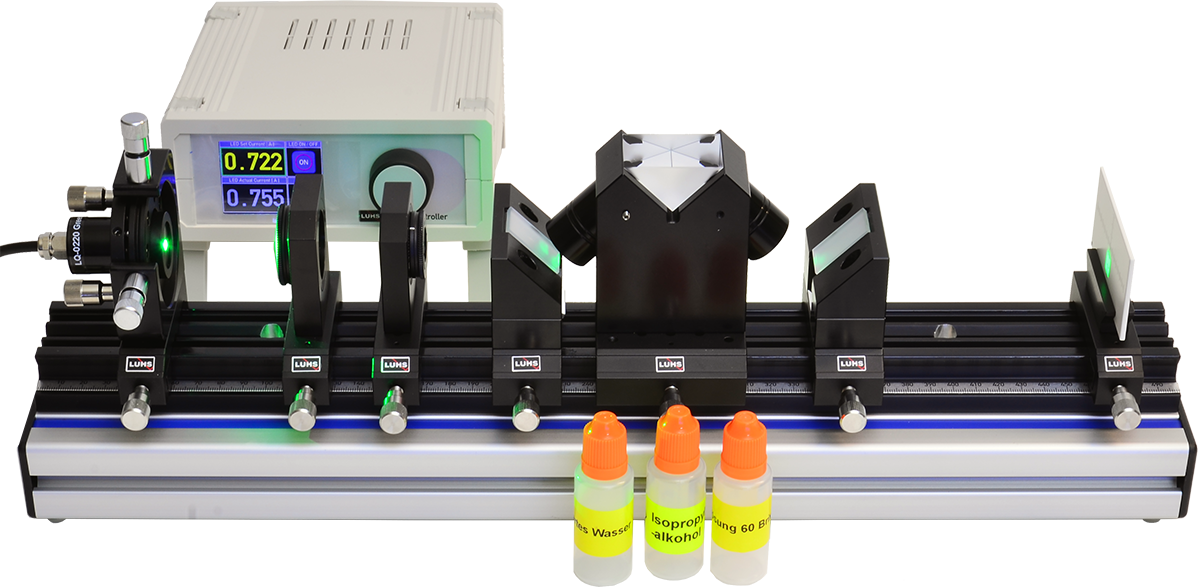Index of Refraction
Prism
Total Reflection
Dispersion
Shadow Line
LED Light Source
LED Beam Forming
Polarizer
Refractometer
PE-0700 Abbe Refractometer
Topics:

PE-0700 Abbe Refractometer
Light path of Abbe's refractometer
Description of the components and modules
| Item | Code | Qty. | Description |
|---|---|---|---|
| 1 | CA-0010 | 1 | Set of test liquids |
| 2 | DC-0020 | 1 | LED and Photodiode Controller |
| 3 | LQ-0220 | 1 | Green LED in ø C25 housing |
| 4 | MM-0028 | 1 | Mounting plate C25-S with angle gradation |
| 5 | MM-0034 | 1 | Mounting plate C30 on carrier MG20 |
| 6 | MM-0110 | 1 | Translucent screen on carrier MG20 |
| 7 | MM-0420 | 1 | Four axes kinematic mount on carrier MG20 |
| 8 | MP-0150 | 1 | Optical Bench MG-65, 500 mm |
| 9 | OC-0140 | 1 | Achromat f=40 mm in C30 mount |
| 10 | OC-0710 | 1 | Polarizer in C25 mount |
| 11 | OM-0460 | 1 | Refraction prism assembly |
| 12 | OM-0462 | 1 | Deflection mirror unit, left |
| 13 | OM-0464 | 1 | Deflection mirror unit, right |
| 14 | UM-PE07 | 1 | Manual Abbe Refractometer |
| Media Type | Title | File Size [MBytes] | Action |
|---|---|---|---|
| PE-0700 Abbe Refractometer Version 2022 |
6.47 MB | Download | |
| Catalogue Page | |||
| JPEG, PNG, SVG | Pictures | ||
| MP4 | Video |